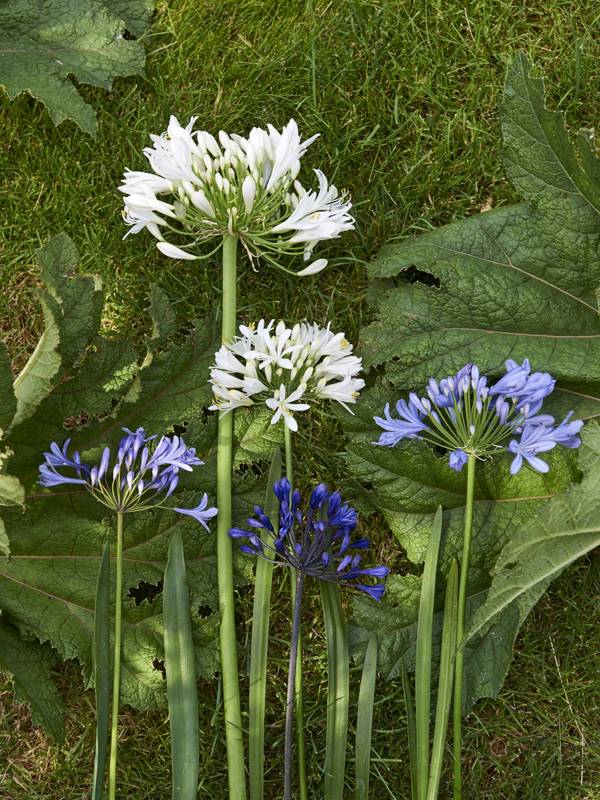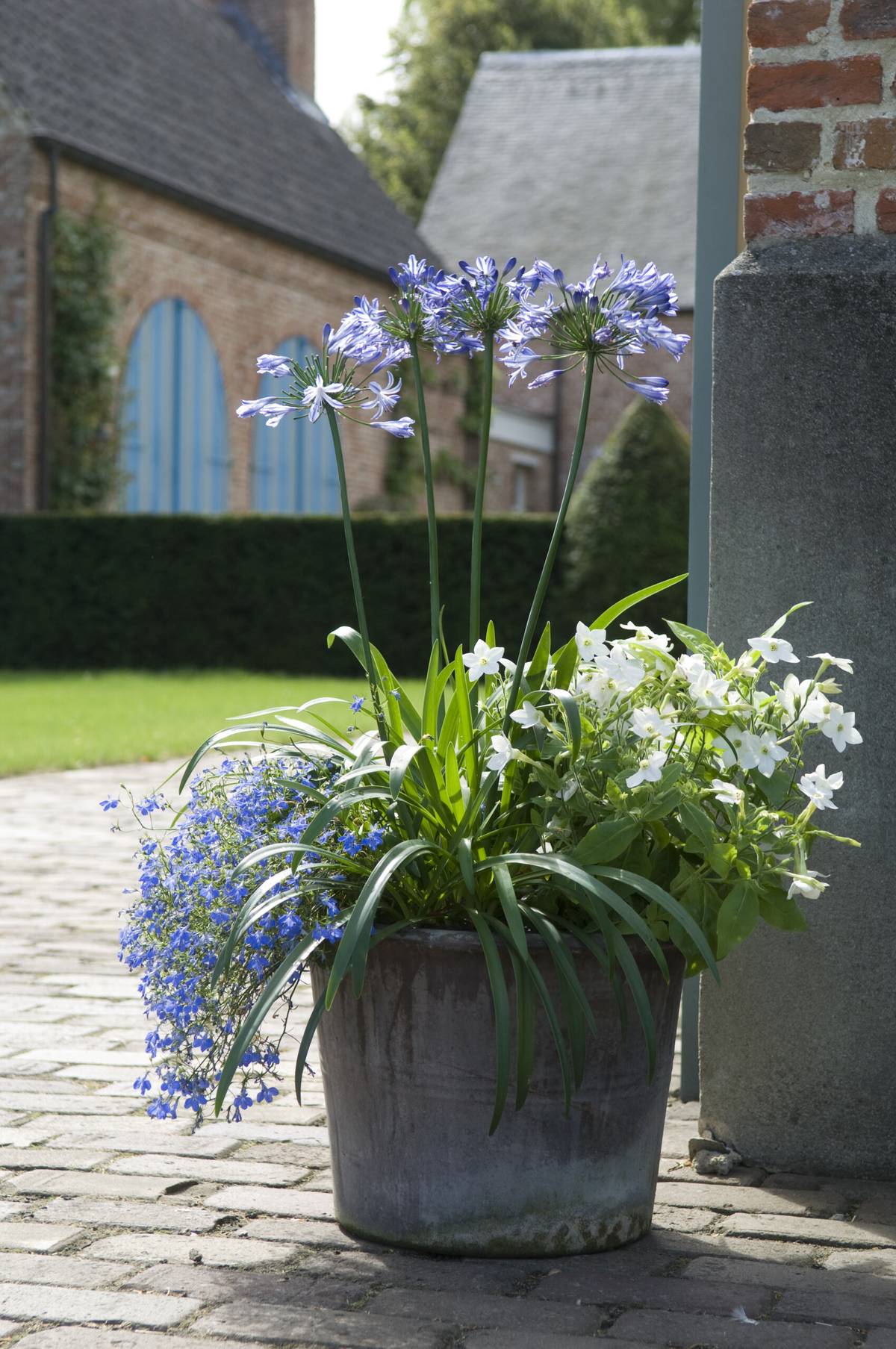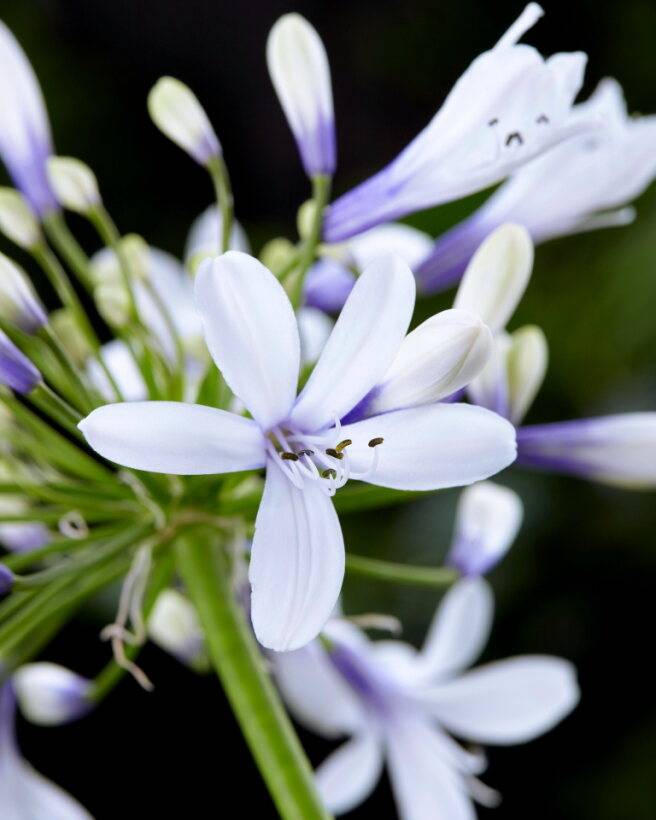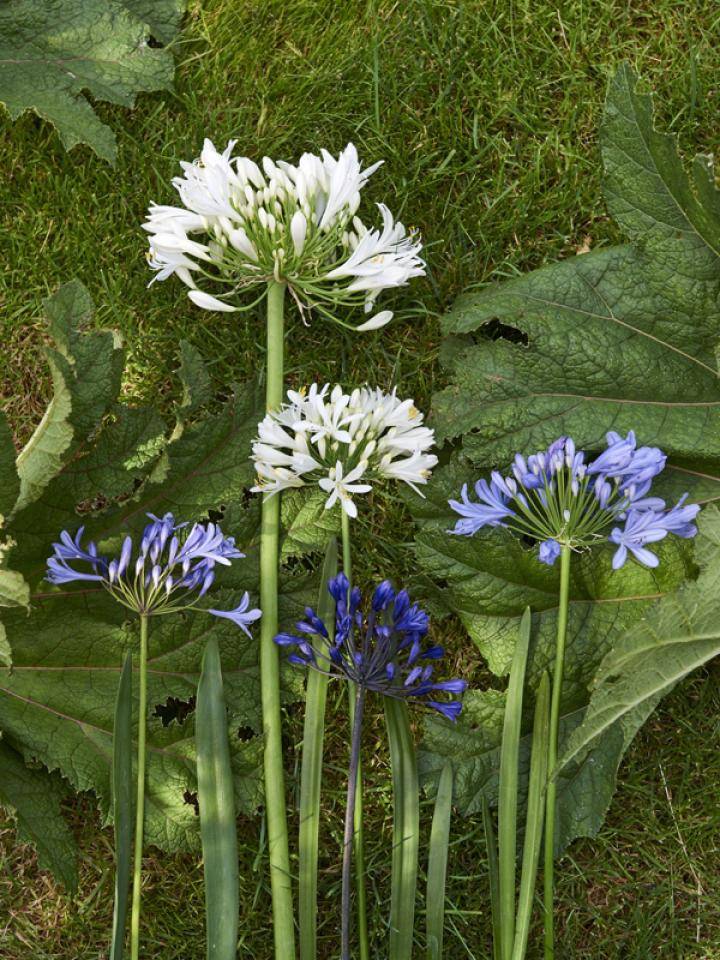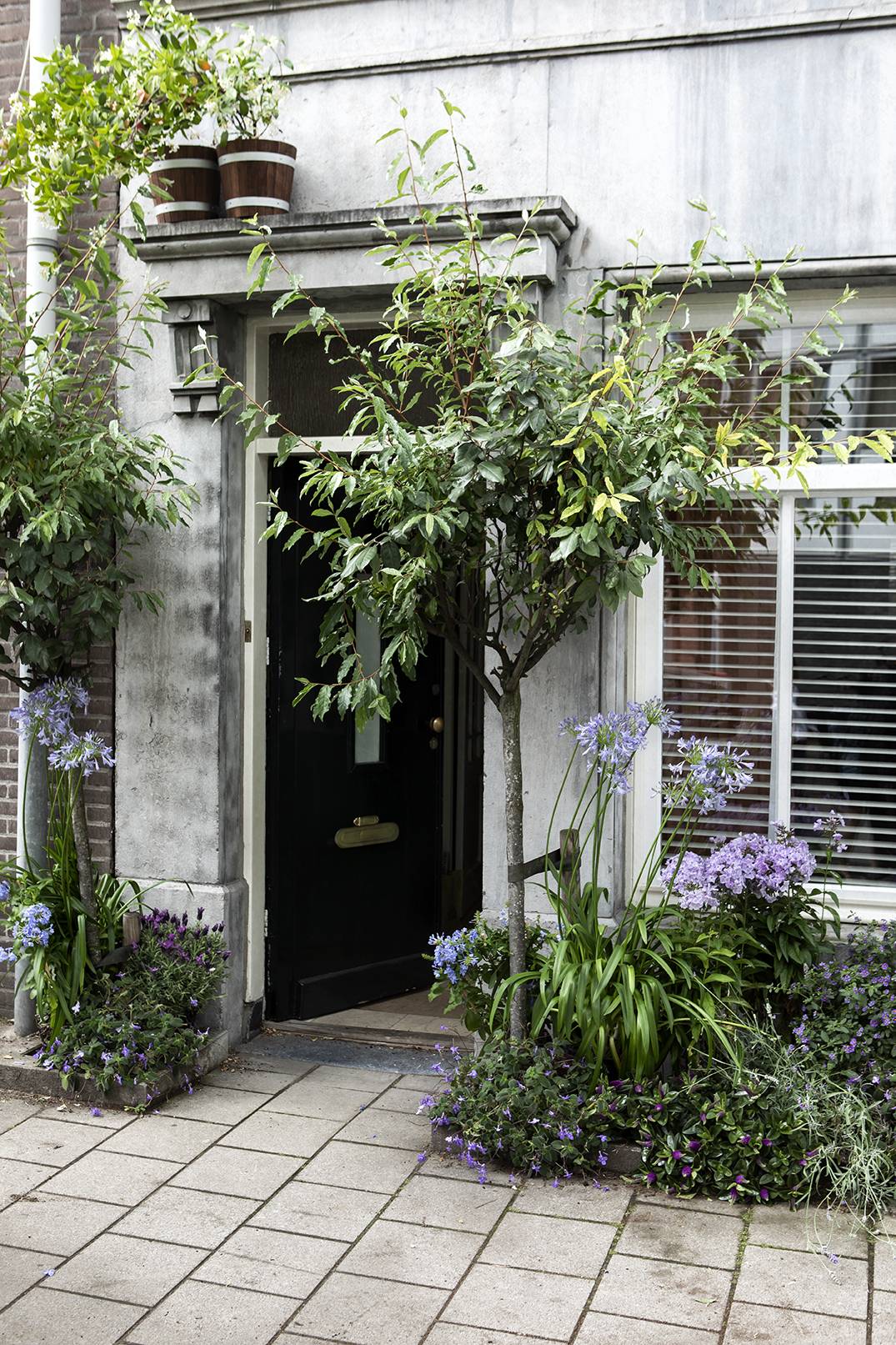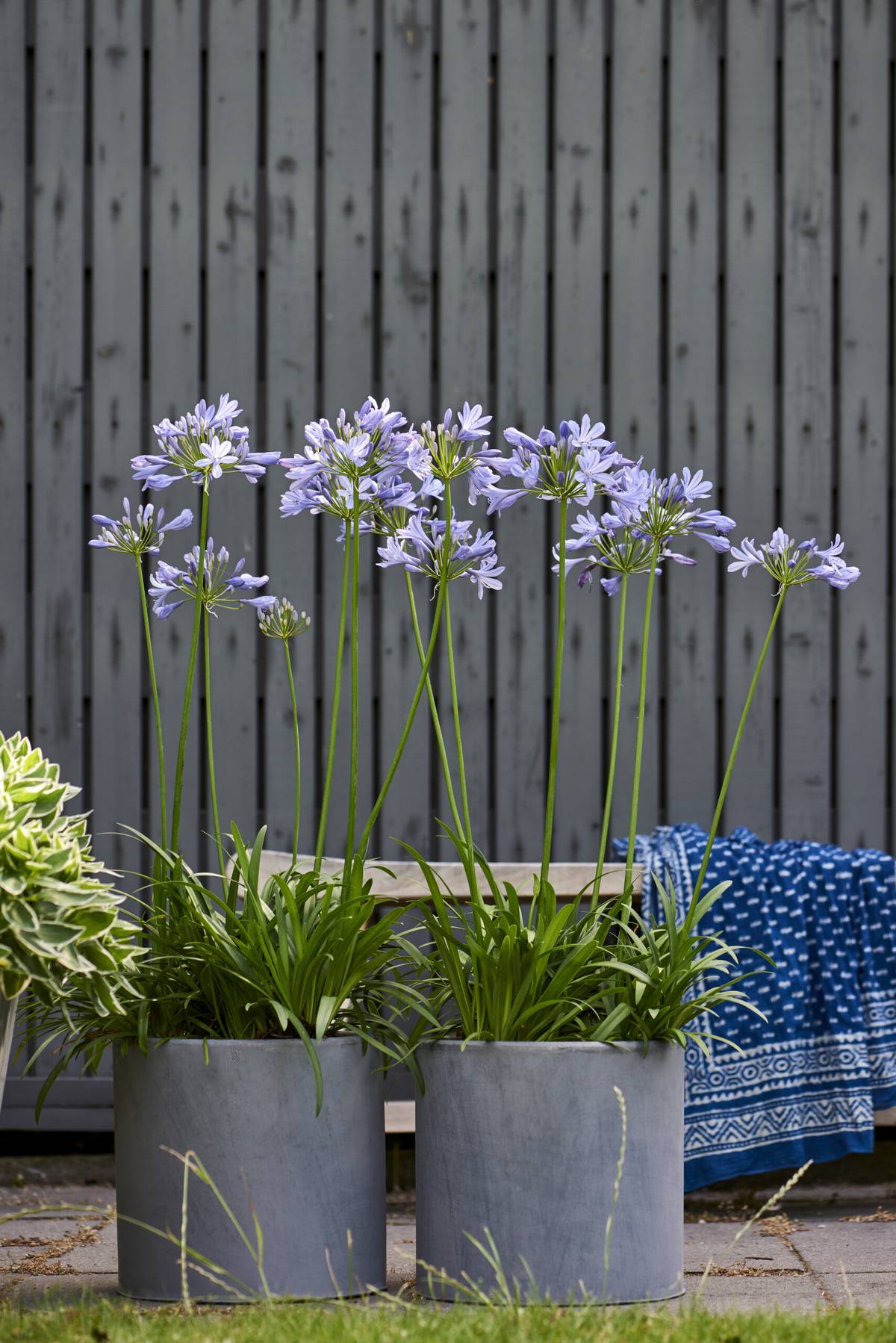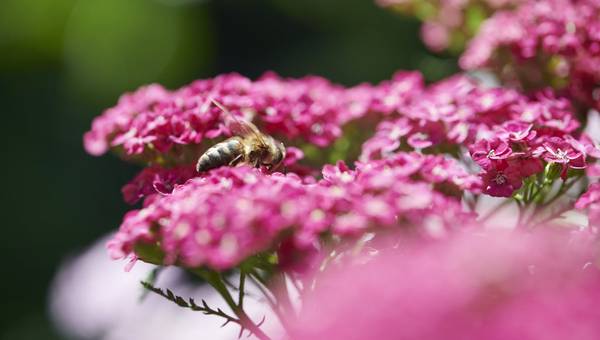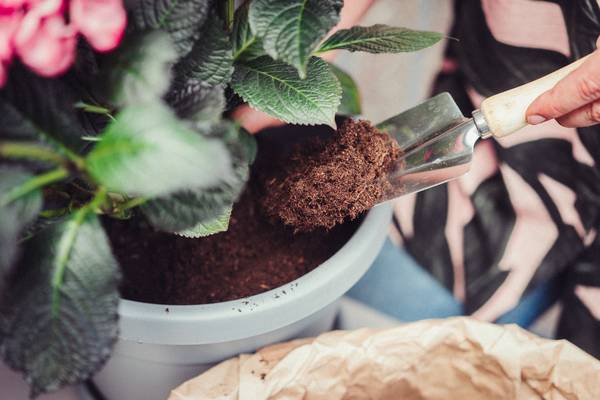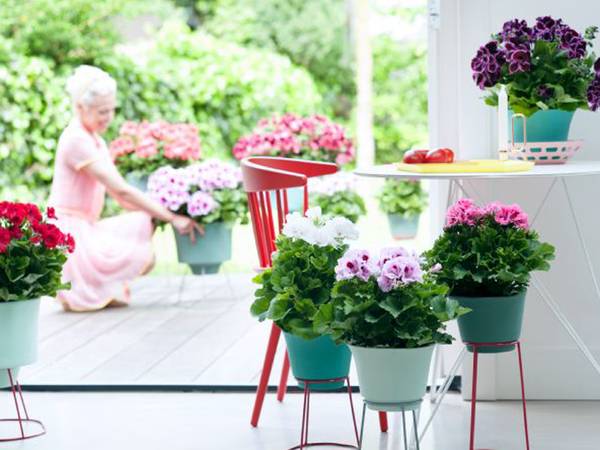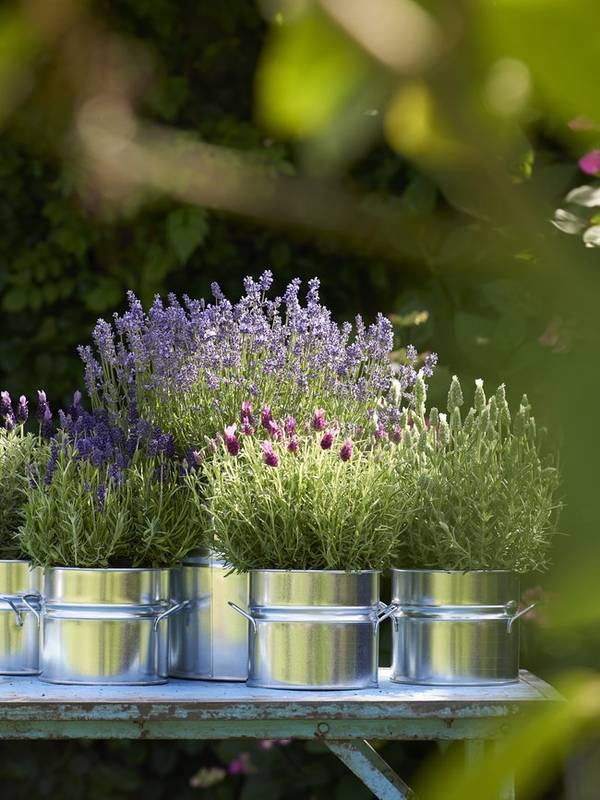
The Agapanthus is also known as the African lily. There are only a limited number of Agapanthus varieties, most derived from A. africanus. The plant blooms in the summer with blue and white flowers. There are varieties that retain their leaves in winter (evergreen) and deciduous Agapanthus varieties. This latter group goes into the winter with no foliage, and is fairly hardy. The plant is very happy in containers and pots, so it would be delighted to brighten up your balcony.
Care tips
Place the plant in a pot with nutrient-rich, well-draining soil.
Agapanthus likes lots of sun and regular watering, particularly when it’s growing.
The plants are not fully hardy. They can cope with a few degrees of frost, but it’s better to take measures in a harsh winter. The plants can overwinter pot and all in a frost-free location such as a shed, cool conservatory or in a cold attic room. During this overwintering period the plants need little water or care.
The Agapanthus can go outside again in March. If the plants are planted in beds, it’s a good idea to cover them in the event of frost with a thick layer of straw or other heat-retaining material so that the frost cannot reach the plants.
The Agapanthus will produce more flowers every year. You stimulate flowering by not repotting.
Origin
The Agapanthus’ origin can be seeing from its name: A. africanus originates from South Africa, where it grows wild. The plants also grows extensively on Madeira. The Dutch East India Company brought the plants to the Netherlands from South Africa in the middle of the 17th century, like many other garden plants.
Trivia
- Agapanthus symbolises love, so it brings a special touch to your patio.
- Agapanthus plants grow in large numbers in gardens, parks and outside hotels and restaurants in Portugal and on the Canary Islands. Many tourists therefore think - incorrectly - that the plant originates there.
